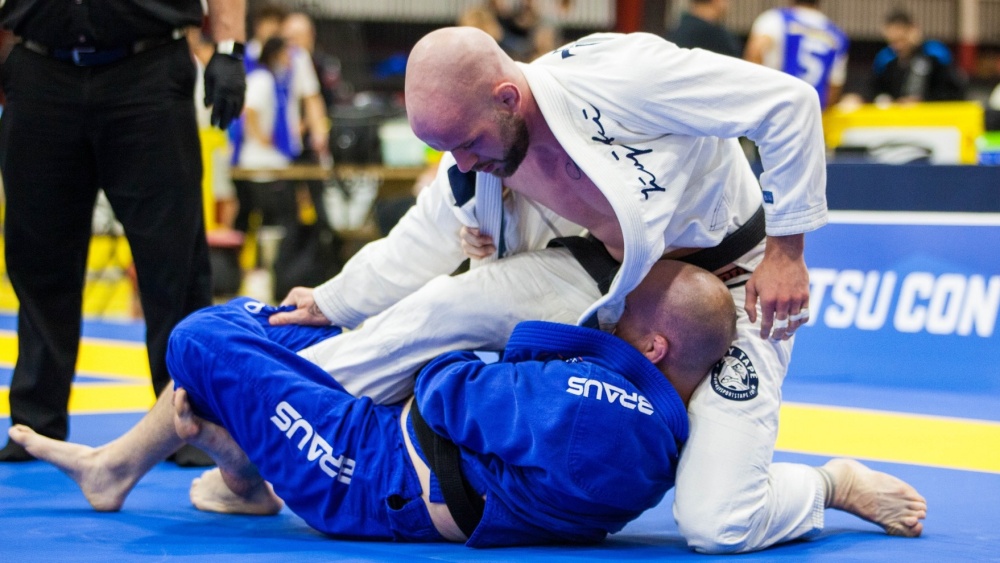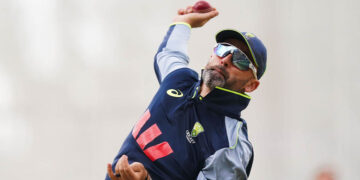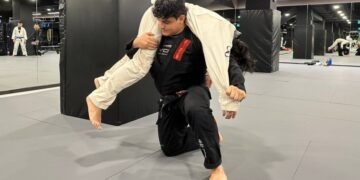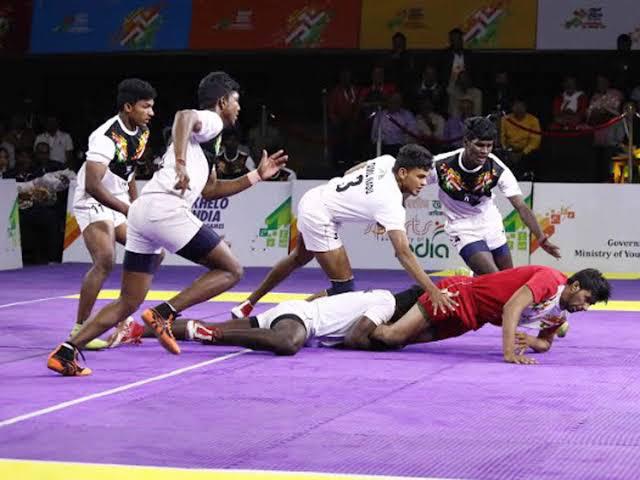
In 2009, at the IBJJF World Championship, a relatively unknown BJJ black belt named Bernardo Faria faced a physically superior opponent in the open weight division. As the match intensified, Faria slid underneath his opponent, clamped his grips, and used a seemingly odd, tucked-in position to tip his adversary over with effortless leverage. Commentators called it “strange but brilliant.” What the audience witnessed was a masterclass in one of the most misunderstood yet effective positions in modern Brazilian Jiu-Jitsu: the Deep Half Guard.
What Is Deep Half Guard?
Think of it as the sneakiest way to turn defense into offense.
You’re on bottom. Your upper body is wedged under your opponent’s hips. One of their legs is trapped between your own. Your head is positioned near their far hip, and your arms are hugging their trapped leg. To someone watching, it might look like you’re in trouble, but ask any seasoned grappler, and they’ll tell you: that’s where the fun begins.
The Deep Half is all about control, angles, and patience. You’re literally underneath your opponent, which gives you insane leverage and off-balancing power. It’s like a pressure cooker position, tight, close, and full of potential.
Why It Works (The Logic Behind It)
The core concept of the deep half is getting underneath your opponent’s center of gravity. Once you’re there, you’re effectively controlling their base from the inside out. Much like a car jack doesn’t need to lift a vehicle with strength but with position and mechanics, the deep half allows you to elevate and tip opponents using minimal effort.
According to 2022 IBJJF match data analyzed by BJJ Heroes, the deep half guard was used in 14% of successful sweep sequences in matches where the practitioner was at a weight disadvantage, indicating its strategic use when technique must trump strength. Bernardo Faria, a five-time IBJJF World Champion, attributes over 60% of his competition sweeps to deep half variations.
2 High-Percentage Sweeps From Deep Half Guard
Now, after covering the basic mechanics and the success stories of the deep half guard, let’s dive into some practical usages of it combined with sweeps that you can potentially use to turn the tides around. You don’t need to master ten sweeps from the deep half to use it effectively. Focus on two core options that work across belt levels:
1) Homer Sweep
Yes that’s right. It’s named after The Simpsons character Homer Simpson for its simplicity and “rolling” nature, this sweep uses your momentum and underhooked leg to roll your opponent backward. Here’s how it goes:
- Control your opponent’s far leg with your outside hand.
- Tuck your head underneath and roll toward the underhooked side.
- Finish in the top half or side control.
The Homer sweep can leave your opponent completely baffled. One moment they are on top with full control, and the next, you have reversed the position and taken over, often before they even realise what happened.
2) Deep Half Back Take (Plan B Sweep)
If your opponent bases out or counters the Homer Sweep, this option becomes available.
- Use your inside arm to elevate the trapped leg.
- Push with your shoulder while turning toward your opponent’s back.
- Pop out behind them into seatbelt control or the turtle.
Both techniques work because they capitalize on the off-balance mechanics created by the deep half position. They’re also relatively safe to attempt, if the sweep fails, you’re still in a structurally sound position to reset.
When Should You Use Deep Half Guard?
While there are various debates as to when you should or should not use them, we’ve found it generally useful to use the Deep Half Guard in the following situations:
- When flattened in traditional half guard, and unable to pummel for the underhook.
- When facing aggressive top-pressure passers.
- As a strategic option when stalling out in closed or open guard.
- During scrambles where you can slide underneath and isolate a leg.
It’s especially effective in Gi and No-Gi settings alike, although in No-Gi, you may rely more on body positioning than lapel or pant grips.
Conclusion
The deep half guard isn’t flashy, but it’s undeniably effective. It’s a position that rewards patience, precision, and understanding of leverage. From white belt to black belt, it offers a powerful tool to neutralise stronger opponents and reverse the fight in your favour.
If you’ve never explored deep half, maybe it’s time to slip beneath the storm and discover its quiet power—so the real question is: will you be the hammer or the lever?
You may also like:
5 Underrated BJJ Submissions That Actually Finish Fights
Trying something new without knowing what to expect can feel intimidating. Whether it’s a new job, a change in routine, or something completely different like learning a martial art. Out of all the styles available,…
When Craig Jones announced the first-ever CJI early last year, most of the Brazilian Jiu-Jitsu and Submission Grappling world thought, “No way he pulls this off.” Then he did. $1 million to the winner, every…
There was no spotlight speech. No drawn-out farewell. Just a man who had given everything to his craft, stepping off the mat for the last time and leaving his black belt behind in Brazilian Jiu-Jitsu….
Ask most practitioners at any Brazilian Jiu-Jitsu gym, and you’ll hear the usual: triangle, armbar, rear naked choke. Proven over time, because effectiveness never goes out of style. But here’s the thing: most experienced grapplers…
Grappling in the United States has grown from something niche into one of the strongest and most creative scenes in the world. What started with the early spread of Brazilian Jiu-Jitsu and a strong wrestling…
BJJ is known for its constantly evolving submission game, and among the many ways to finish a match, the “bar” submissions stand out as some of the most fundamental and effective. These submissions, which typically…
If you are thinking about picking up a striking martial art in Singapore, you’ve probably heard of two popular options, Muay Thai and Boxing. Whether your goal is fitness, fun, or personal growth, understanding the…
Think martial arts is a young person’s game? Think again. Signing up for martial arts classes could be one of the best decisions you’ve ever made for your mental and physical health, whether you’re 40,…
Whether you are training at a local martial arts gym in Singapore training Boxing, Muay Thai, MMA or anywhere else, you will always hear one word repeated, footwork. Why is that? Well, you can have…
When people think of MMA, they usually picture the highlight moments, explosive knockouts, slick submissions, and last-minute comebacks. What they don’t see is the hard work and engine underneath all of it: conditioning. Conditioning is…
Not many Muay Thai fighters compete at the highest level well into their late 30s. Even fewer manage to stay on the edge. Nong-O Hama is one of the rare exceptions. Since making his debut…
Trying to get back into shape after a lengthy break often feels like you’re trying to climb Mount Everest in flip-flops. Little things, like trying to tie your shoelaces, can make you out of breath,…


![[WATCH] IND vs SA 2025: Umpire Rohan Pandit down in pain as Sanju Samson drive hits knee](https://www.babu88sports.com/wp-content/uploads/2025/12/watch-ind-vs-sa-2025-umpire-rohan-pandit-down-in-pain-as-sanju-samson-drive-hits-knee-360x180.jpg)





























![[WATCH] IND vs SA 2025: Umpire Rohan Pandit down in pain as Sanju Samson drive hits knee](https://www.babu88sports.com/wp-content/uploads/2025/12/watch-ind-vs-sa-2025-umpire-rohan-pandit-down-in-pain-as-sanju-samson-drive-hits-knee-120x86.jpg)



![[WATCH] IND vs SA 2025: Umpire Rohan Pandit down in pain as Sanju Samson drive hits knee](https://www.babu88sports.com/wp-content/uploads/2025/12/watch-ind-vs-sa-2025-umpire-rohan-pandit-down-in-pain-as-sanju-samson-drive-hits-knee-350x250.jpg)
